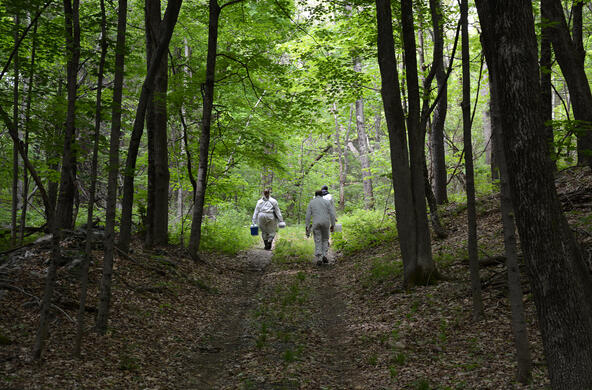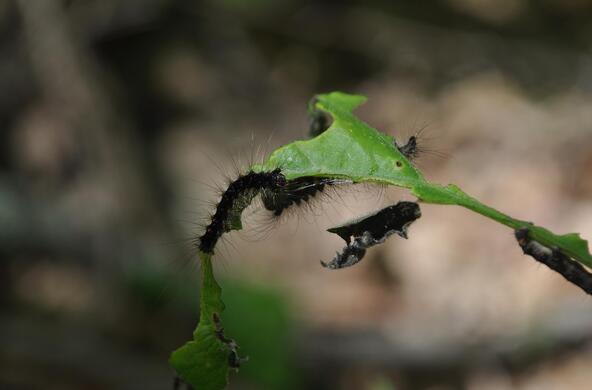Twenty years could be considered a generation. If you were John Keats, who died at 25, four-fifths of your life would be over.
In the natural world, it's a moment.
"It's the blink of an eye," said ecologist Richard Ostfeld of the Cary Institute of Ecosystems Studies in Millbrook, N.Y.
But using data he and the staff at Cary have collected since the 1990s, Ostfeld has found a marked change in the behavior of black-legged ticks -- they are arriving on the scene earlier than ever in the spring. They're also showing up farther to the north, and at higher elevations, than they have in the past.
Because black-legged ticks spread Lyme disease, these changes could mean that humans have to be on guard against ticks and tick bites earlier in the year -- in April, rather than May. It also means communities that have been spared Lyme disease so far will have to watch for it.
"There are places in southern Ontario and Quebec that are seeing Lyme disease for the first time," Ostfeld said.
Cary Institute research, published this year in a British scientific journal, is based on data collected at the institute's campus for 19 years.
There, weather data show that, because of climate change, spring is arriving earlier. Others have found the same pattern throughout the United States.
But over the same 19 years, Cary researchers have been capturing tens of thousands of white-footed mice and chipmunks, as well as about 450,000 ticks. These scurrying rodents are the major reservoirs of the bacteria that causes Lyme disease. Ticks feed on them and pick up the Lyme bacteria, then bite humans and spread it to us.
The researchers then correlated the sets of data. They found in warmer years, nymphal ticks -- tiny, hard to detect and hungry for a spring blood meal -- emerged from the ground earlier.
"It's about two weeks earlier than it was 20 years ago -- in mid-April, rather than the beginning of May," Ostfeld said. If climate change continues to make the world warmer, he said, it's reasonable to believe that black-legged ticks will show up earlier still.
A second study by the Cary staff found that black-legged ticks are spreading north and to higher elevations, bringing Lyme disease with them. Climate change may be responsible for ramping up these changes as well, Ostfeld said.
The conclusions of the two studies are important for public health officials.
Traditionally, May starts the Lyme disease season. Ostfeld said they should think about issuing Lyme disease warnings earlier. Cities and towns in more northern climates may have to learn about the disease and learn how to treat it, too, he said.
Neeta Connolly, an assistant professor of biological and environmental sciences at Western Connecticut State University in Danbury and an expert in ticks and their disease-spreading ways, said her studies in Connecticut show the black-legged tick nymphs emerging in early May and peaking at the end of that month.
But Connolly said if people started looking for nymphal ticks earlier, it's likely a few would turn up in Connecticut in April as well. She said people brought to her lab an adult tick they found Dec. 28.
That's because ticks can overwinter in very cold weather, Connolly said. They survive in Minnesota and Wisconsin. What they need to thrive is an environment with lots of moisture.
"That's why they like to get into places like leaf litter," she said.
So now, when the state's snow pack is finally melting and exposing bare ground, adult ticks may start scuttling out and attaching themselves to any available mammal with blood to spare.
"My message is that every day it's above freezing, you could be bitten by a tick," Connolly said.







